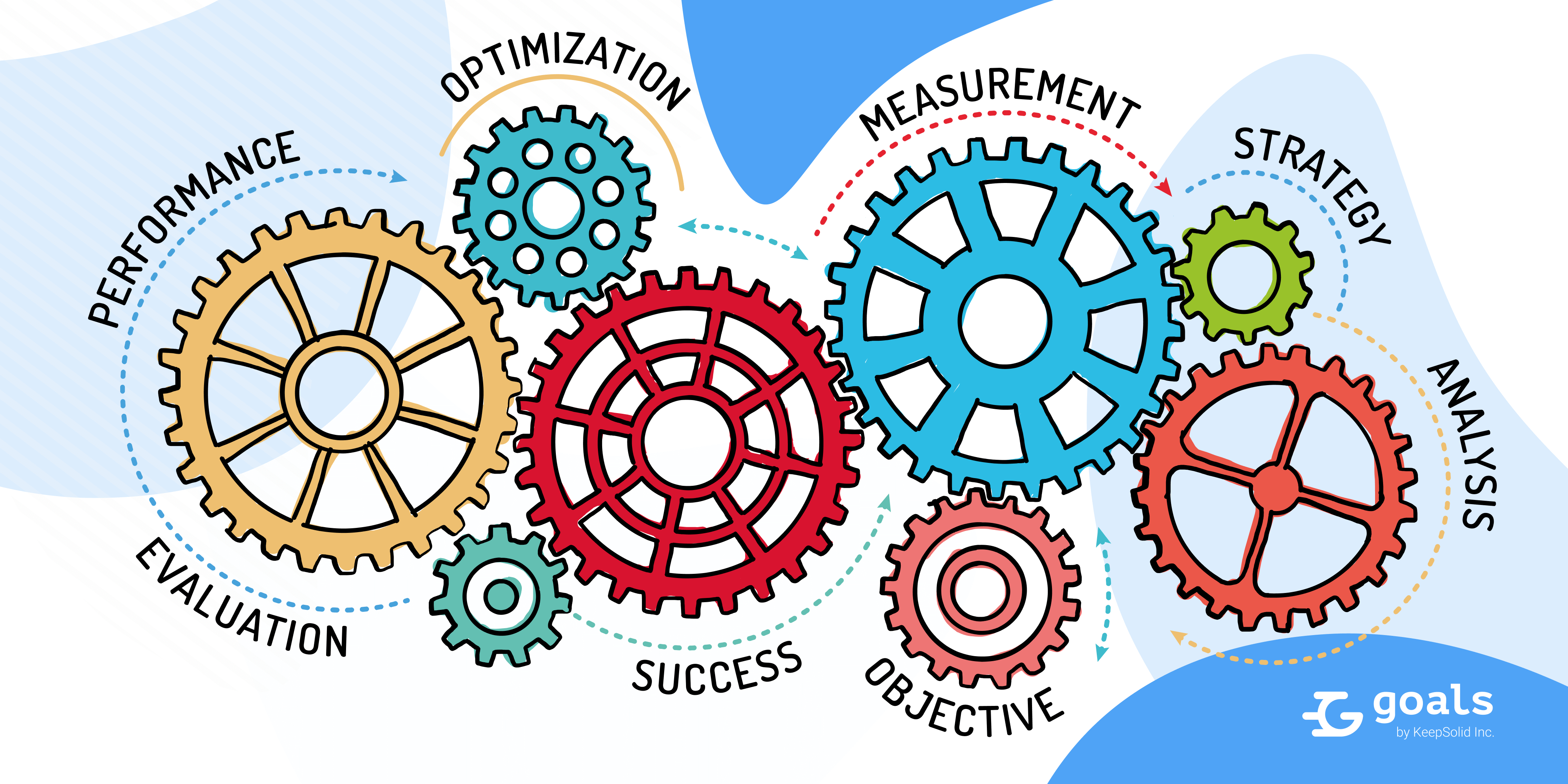
Business Key Performance Indicators: Definition, Guidelines, Examples
Reading Time: 4 minutesMany organizations use KPIs (key performance indicators) to define and measure their success. While KPI metrics are most often used by businesses, employees also benefit from key performance indicators in setting their career goals. Allow Goals by KeepSolid team to show you how to define and analyze your KPIs effectively.
What is a business KPI success metric
Key performance indicators in business are usually defined as metrics that help organizations track performance over a period of time. KPIs help individuals and companies understand and assess their success towards a goal. Businesses are analyzing these metrics to compare their business against competitors and determine their progress.
If your business KPIs show positive results, your strategy is apparently successful and you should focus on maintaining it. If the KPIs are not so great, it is a warning of some issues that you should identify and eliminate in order to improve.
Employees will benefit from tracking performance indicators, as well. KPIs allow them to better understand their professional growth and career development. In both cases, the ability to quickly make the necessary changes will help you stay ahead of the competition.
Levels of business KPIs
It’s worth noting that KPIs can be used to monitor progress toward objectives of any level. Organizations typically use them to analyze the performance of individuals, projects, departments, or the entire company.
Therefore, different levels of KPIs can be defined. KPIs that track smaller projects, e.g. departmental strategies, are called “low KPIs.” Key performance indicators that track an entire company’s objective are called “high KPIs.” The latter measure the business’ progress as a whole. Both are vital to helping an organization achieve its goals and identify opportunities for improvement. Generally, low KPIs contribute toward the high KPIs, driving the achievement of business goals.

What key success metrics are used in business
Obviously, KPIs of a company depend on its industry and objectives. For instance, a technology company may compare each year’s earnings to measure growth, while a retailer would look at same-store sales for this.
Business KPIs will also vary in how quantitative they are. For example, user satisfaction with a site, service, or product is open to interpretation, while earnings are much easier to measure. Key performance indicators can be applied to finances, marketing, sales, customer service, human resources, manufacturing, supply chain, etc.
Whatever performance indicators you choose, make sure to properly define your KPIs and synergize them with other business, planning, and management tools. To maximize the efficiency of key business metrics, you want to see how they relate to your overarching objective and smaller tasks. Certain tools, such as Goals by KeepSolid, are specifically designed to streamline setting and tracking KPIs as part of the bigger business picture.
How to choose business performance metrics
Choosing correct KPIs is, well, key to ensure you’re getting relevant information with them. This way you’ll save your money and your time. But with endless KPI options available, how to choose the right ones? Follow these steps and you’ll learn how to select and implement business performance metrics:
- Determine and set your end goal. This will provide you a clear understanding of what you are aiming to accomplish. Keep this goal simple and concise.
- Create your key performance questions (KPQs) – questions used to determine if you’ve met the goal or not. An example of KPQ: “What business processes are costing us the most money?”
- See what information you already have. You may find that another manager or department is already collecting the data you needed. Then you can simply apply this information to your business strategy. This will also help you set realistic targets for your KPIs.
- Get supporting data. Collect statistics on competitors, demographics, and industry trends. This information will inform your KPIs. But avoid simply tracking the exact same key performance indicators as your competitors. Your business is unique and will most likely require different success metrics.
- Decide on the frequency of measuring the KPIs. Gather information as often as appropriate for your organization’s needs. Monitoring KPI status will ensure they’re still relevant and useful.
- Delegate responsibility for KPIs. An employee or a manager should ALWAYS be in charge of each key performance indicator’s assessment, as well as collecting and presenting the data.
- Share key metrics with the organization and stakeholders. Communicating strategies, performance, and outcomes is vital for business success.

Business KPI examples and templates
Finances and sales KPIs
Here are some examples of key performance indicators in finance and sales:
- Earnings before interest, taxes, depreciation and amortization (EBITDA)
- Net profit (revenue retained after paying taxes and expenses)
- Gross profit (revenue retained after deducting the production cost)
- Costs
- Debt vs. equity ratio
- Projected vs. actual revenue
- Expenses vs. budget
- Deals closed
- Sales from new customers
- Regional or national sales
- Day sales outstanding (DSO) (number of days it takes to receive payment after a sale)
- Average sale size
- The number of returned items
Marketing KPIs
Here are some examples of key performance indicators in marketing:
- Online traffic on the company website (the number of visitors)
- Organic online traffic (website visitors who came via a search engine)
- Mobile traffic
- Social media traffic
- New vs. returning traffic
- Money spent on marketing over a set period
- Sales revenue from online marketing campaigns
- Leads (potential customers who are likely to buy your product / service)
- Click-through rate
- Cost per lead
Customer relations KPIs
Here are some examples of key performance indicators in customer service:
- Customer satisfaction
- Customer support ticket response times
- The number of customer complaints
- The number of calls to customer service
- Percentage of customers who quit your service / buy no more products
- Customers gained over a set period
- Customer retention
- Customer lifetime value
Human resources and employment KPIs
Here are some examples of key performance indicators in human resources or employment:
- Employee turnover
- The number of new hires
- Cost per hire
- Salary competitiveness ratio
- The number of promotions
- Absenteeism rate
- Retirement rate
- Employee satisfaction
Employee success KPIs
Here are some examples of key performance indicators of employees’ development:
- Number of projects completed over a set period
- Units processed over a set period
- Sales quotas and other personal targets
- Job satisfaction
- Customer satisfaction
- Work speed
- Absenteeism
We hope this helps! And be sure to check out Goals by KeepSolid for free to see how it helps set and track KPIs.